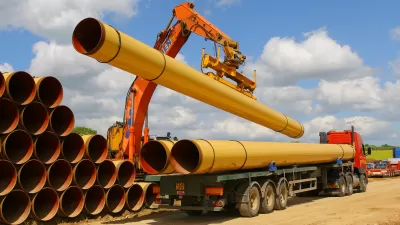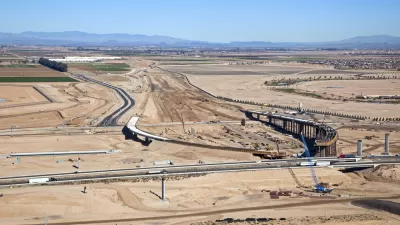Making materials like cement, plastic, glass, and steel creates a lot of emissions. In an opinion piece, Bill Gates argues any climate plan needs to grapple with these hard-to-decarbonize industries.

The American energy sector is increasingly moving away from coal and other big emitters, while transportation's emissions continue to grow. Many plans have been written about lowering emissions from coal and oil, but what about steel?
Microsoft Co-Founder Bill Gates argues that the difficulty of decarbonizing the manufacture of materials like steel will be a crucial issue to tackle to fight climate change. "Making steel and other materials—such as cement, plastic, glass, aluminum, and paper—is the third biggest contributor of greenhouse gases, behind agriculture and making electricity. It’s responsible for a fifth of all emissions,” Gates argues in his website Gates Notes.
While it may be possible to reduce our dependence on some materials, they are used for good reasons. "Steel—cheap, strong, and infinitely recyclable—also goes into shingles, household appliances, canned goods, and computers. Concrete—rust-resistant, rot-proof, and non-flammable—can be made dense enough to absorb radiation or light enough to float on water," Gates writes. Gates argues that many strategies will be needed to tackle the issue, including fuel switching (many of these industries use coal), electrification, and carbon capture.
FULL STORY: Here’s a question you should ask about every climate change plan

Planetizen Federal Action Tracker
A weekly monitor of how Trump’s orders and actions are impacting planners and planning in America.

Congressman Proposes Bill to Rename DC Metro “Trump Train”
The Make Autorail Great Again Act would withhold federal funding to the system until the Washington Metropolitan Area Transit Authority (WMATA), rebrands as the Washington Metropolitan Authority for Greater Access (WMAGA).

DARTSpace Platform Streamlines Dallas TOD Application Process
The Dallas transit agency hopes a shorter permitting timeline will boost transit-oriented development around rail stations.

Porches, Pets, and the People We Grow Old With
Neighborhood connections and animal companions matter to aging with dignity, and how we build can support them. Here’s a human-scale proposal for aging in place.

Single-Stair Design Contest Envisions Human-Scale Buildings
Single-stair building construction is having a resurgence in the United States, where, for the last several decades, zoning codes have required more than one staircase in multi-story housing developments.

Tesla Protests Release of Documents About Austin Robotaxi Launch
The company seeks to block the release of emails with city officials on the grounds they could contain confidential information and trade secrets.
Urban Design for Planners 1: Software Tools
This six-course series explores essential urban design concepts using open source software and equips planners with the tools they need to participate fully in the urban design process.
Planning for Universal Design
Learn the tools for implementing Universal Design in planning regulations.
City of Charlotte
Municipality of Princeton
Roanoke Valley-Alleghany Regional Commission
City of Camden Redevelopment Agency
City of Astoria
Transportation Research & Education Center (TREC) at Portland State University
US High Speed Rail Association
City of Camden Redevelopment Agency
Municipality of Princeton (NJ)





























